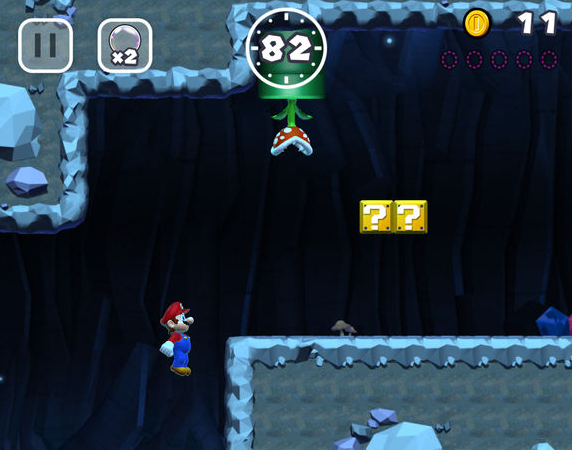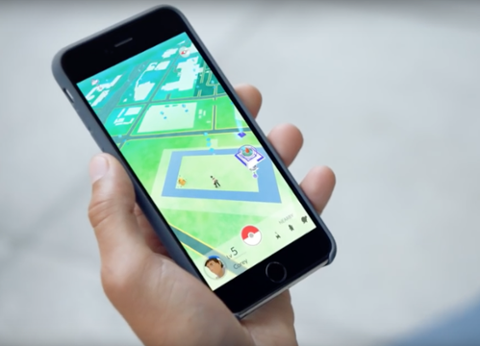 Among all the iOS apps launched in 2016, Nintendo’s “Super Mario Run” was arguably the most anticipated. A longtime hit character on gaming consoles, Mario had yet to make the jump to iPhones and iPads, and pundits predicted that Nintendo (along with Apple, taking its usual revenue cut) would earn a hefty profit off the new game. As expected, “Super Mario Run” racked up big numbers in the week following its Dec. 15 release: some 37 million people around the world downloaded the game, paying $14 million to unlock all of its content. Despite running up those numbers, however, the game is attracting its share of criticism from people claiming that $10 is too much to pay for an app. Nearly a week after release, its rating in Apple’s iOS App Store stood at 2.5 stars out of 5, strikingly low for such a high-profile product; a share of the accompanying user reviews referred to it as “overpriced.” The irony, of course, is that Nintendo games on consoles cost a healthy multiple of “Super Mario Run” on iOS: “Mario Kart 8,” which was released in 2014 for the Wii U, retails for $59.99 on Nintendo’s Website, for example. And yes, “Super Mario Run” is a relatively short play-through when compared to some of its console predecessors—but not all that short. The tempest-in-a-teapot over the cost of “Super Mario Run” illustrates a key concept of app development, one that deserves any developer’s attention: you simply can’t charge very much (if anything) for apps and expect people to download them. That’s unfortunate for developers, who need revenue and profits if they want to keep building and developing software for mobile platforms. In fact, although app-monitoring firm App Annie believes that the market for mobile apps will hit a healthy $166 billion next year (with consumer spend accounting for $65 billion of that total, and in-app advertising constituting the rest), developers are facing greater challenges than ever when it comes to holding consumer attention. Marketing service Appboy recently estimated that only 5 percent of users continue to interact regularly with an app three months after they installed it. Then there’s the small matter of fighting to have your app stand out amidst a very crowded ecosystem of competitors. While a big brand like Nintendo’s Mario can neatly sidestep many of the issues associated with app visibility, it can still be affected by consumer perceptions that apps should cost one or two dollars, if anything. Many developers (including Niantic, which worked with Nintendo to create “Pokemon Go,” an augmented-reality game for mobile) are pursuing the route of offering their works for free, hoping that users will eventually make “micro-payments” for added features and content. Whether or not free apps are the future, recent trends in app usage and purchasing indicate yet again that consumers are fickle with time and money. Holding onto them remains a perpetual challenge for app-makers of all types—especially if you charge ten bucks to fully unlock what some may perceive as relatively little content.
Among all the iOS apps launched in 2016, Nintendo’s “Super Mario Run” was arguably the most anticipated. A longtime hit character on gaming consoles, Mario had yet to make the jump to iPhones and iPads, and pundits predicted that Nintendo (along with Apple, taking its usual revenue cut) would earn a hefty profit off the new game. As expected, “Super Mario Run” racked up big numbers in the week following its Dec. 15 release: some 37 million people around the world downloaded the game, paying $14 million to unlock all of its content. Despite running up those numbers, however, the game is attracting its share of criticism from people claiming that $10 is too much to pay for an app. Nearly a week after release, its rating in Apple’s iOS App Store stood at 2.5 stars out of 5, strikingly low for such a high-profile product; a share of the accompanying user reviews referred to it as “overpriced.” The irony, of course, is that Nintendo games on consoles cost a healthy multiple of “Super Mario Run” on iOS: “Mario Kart 8,” which was released in 2014 for the Wii U, retails for $59.99 on Nintendo’s Website, for example. And yes, “Super Mario Run” is a relatively short play-through when compared to some of its console predecessors—but not all that short. The tempest-in-a-teapot over the cost of “Super Mario Run” illustrates a key concept of app development, one that deserves any developer’s attention: you simply can’t charge very much (if anything) for apps and expect people to download them. That’s unfortunate for developers, who need revenue and profits if they want to keep building and developing software for mobile platforms. In fact, although app-monitoring firm App Annie believes that the market for mobile apps will hit a healthy $166 billion next year (with consumer spend accounting for $65 billion of that total, and in-app advertising constituting the rest), developers are facing greater challenges than ever when it comes to holding consumer attention. Marketing service Appboy recently estimated that only 5 percent of users continue to interact regularly with an app three months after they installed it. Then there’s the small matter of fighting to have your app stand out amidst a very crowded ecosystem of competitors. While a big brand like Nintendo’s Mario can neatly sidestep many of the issues associated with app visibility, it can still be affected by consumer perceptions that apps should cost one or two dollars, if anything. Many developers (including Niantic, which worked with Nintendo to create “Pokemon Go,” an augmented-reality game for mobile) are pursuing the route of offering their works for free, hoping that users will eventually make “micro-payments” for added features and content. Whether or not free apps are the future, recent trends in app usage and purchasing indicate yet again that consumers are fickle with time and money. Holding onto them remains a perpetual challenge for app-makers of all types—especially if you charge ten bucks to fully unlock what some may perceive as relatively little content. Super Mario’s Lessons for App Pricing
 Among all the iOS apps launched in 2016, Nintendo’s “Super Mario Run” was arguably the most anticipated. A longtime hit character on gaming consoles, Mario had yet to make the jump to iPhones and iPads, and pundits predicted that Nintendo (along with Apple, taking its usual revenue cut) would earn a hefty profit off the new game. As expected, “Super Mario Run” racked up big numbers in the week following its Dec. 15 release: some 37 million people around the world downloaded the game, paying $14 million to unlock all of its content. Despite running up those numbers, however, the game is attracting its share of criticism from people claiming that $10 is too much to pay for an app. Nearly a week after release, its rating in Apple’s iOS App Store stood at 2.5 stars out of 5, strikingly low for such a high-profile product; a share of the accompanying user reviews referred to it as “overpriced.” The irony, of course, is that Nintendo games on consoles cost a healthy multiple of “Super Mario Run” on iOS: “Mario Kart 8,” which was released in 2014 for the Wii U, retails for $59.99 on Nintendo’s Website, for example. And yes, “Super Mario Run” is a relatively short play-through when compared to some of its console predecessors—but not all that short. The tempest-in-a-teapot over the cost of “Super Mario Run” illustrates a key concept of app development, one that deserves any developer’s attention: you simply can’t charge very much (if anything) for apps and expect people to download them. That’s unfortunate for developers, who need revenue and profits if they want to keep building and developing software for mobile platforms. In fact, although app-monitoring firm App Annie believes that the market for mobile apps will hit a healthy $166 billion next year (with consumer spend accounting for $65 billion of that total, and in-app advertising constituting the rest), developers are facing greater challenges than ever when it comes to holding consumer attention. Marketing service Appboy recently estimated that only 5 percent of users continue to interact regularly with an app three months after they installed it. Then there’s the small matter of fighting to have your app stand out amidst a very crowded ecosystem of competitors. While a big brand like Nintendo’s Mario can neatly sidestep many of the issues associated with app visibility, it can still be affected by consumer perceptions that apps should cost one or two dollars, if anything. Many developers (including Niantic, which worked with Nintendo to create “Pokemon Go,” an augmented-reality game for mobile) are pursuing the route of offering their works for free, hoping that users will eventually make “micro-payments” for added features and content. Whether or not free apps are the future, recent trends in app usage and purchasing indicate yet again that consumers are fickle with time and money. Holding onto them remains a perpetual challenge for app-makers of all types—especially if you charge ten bucks to fully unlock what some may perceive as relatively little content.
Among all the iOS apps launched in 2016, Nintendo’s “Super Mario Run” was arguably the most anticipated. A longtime hit character on gaming consoles, Mario had yet to make the jump to iPhones and iPads, and pundits predicted that Nintendo (along with Apple, taking its usual revenue cut) would earn a hefty profit off the new game. As expected, “Super Mario Run” racked up big numbers in the week following its Dec. 15 release: some 37 million people around the world downloaded the game, paying $14 million to unlock all of its content. Despite running up those numbers, however, the game is attracting its share of criticism from people claiming that $10 is too much to pay for an app. Nearly a week after release, its rating in Apple’s iOS App Store stood at 2.5 stars out of 5, strikingly low for such a high-profile product; a share of the accompanying user reviews referred to it as “overpriced.” The irony, of course, is that Nintendo games on consoles cost a healthy multiple of “Super Mario Run” on iOS: “Mario Kart 8,” which was released in 2014 for the Wii U, retails for $59.99 on Nintendo’s Website, for example. And yes, “Super Mario Run” is a relatively short play-through when compared to some of its console predecessors—but not all that short. The tempest-in-a-teapot over the cost of “Super Mario Run” illustrates a key concept of app development, one that deserves any developer’s attention: you simply can’t charge very much (if anything) for apps and expect people to download them. That’s unfortunate for developers, who need revenue and profits if they want to keep building and developing software for mobile platforms. In fact, although app-monitoring firm App Annie believes that the market for mobile apps will hit a healthy $166 billion next year (with consumer spend accounting for $65 billion of that total, and in-app advertising constituting the rest), developers are facing greater challenges than ever when it comes to holding consumer attention. Marketing service Appboy recently estimated that only 5 percent of users continue to interact regularly with an app three months after they installed it. Then there’s the small matter of fighting to have your app stand out amidst a very crowded ecosystem of competitors. While a big brand like Nintendo’s Mario can neatly sidestep many of the issues associated with app visibility, it can still be affected by consumer perceptions that apps should cost one or two dollars, if anything. Many developers (including Niantic, which worked with Nintendo to create “Pokemon Go,” an augmented-reality game for mobile) are pursuing the route of offering their works for free, hoping that users will eventually make “micro-payments” for added features and content. Whether or not free apps are the future, recent trends in app usage and purchasing indicate yet again that consumers are fickle with time and money. Holding onto them remains a perpetual challenge for app-makers of all types—especially if you charge ten bucks to fully unlock what some may perceive as relatively little content. 


